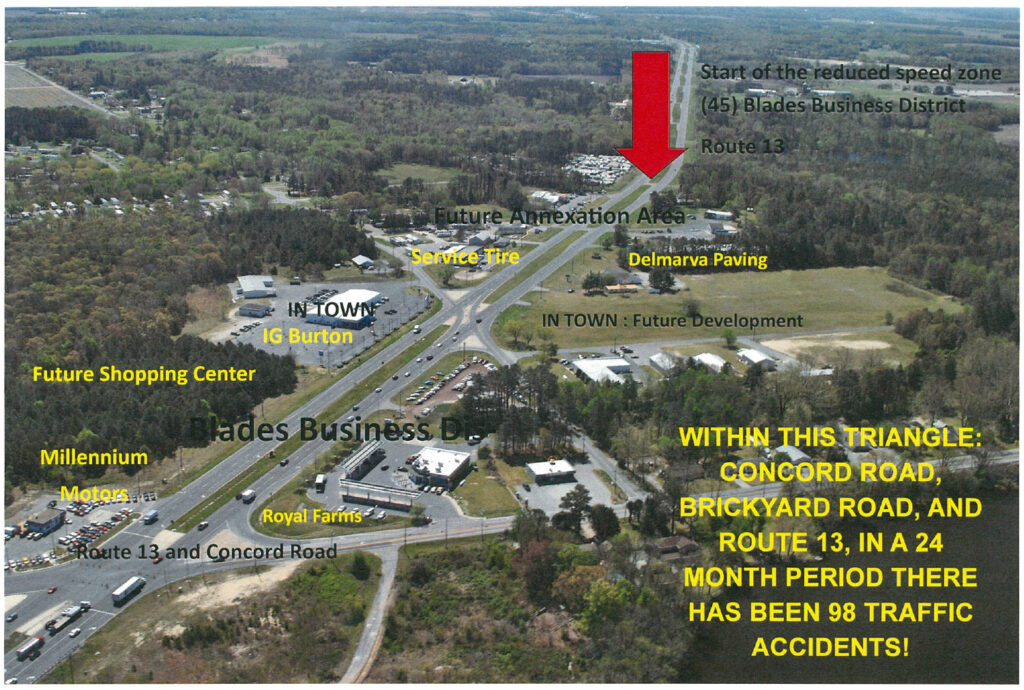2021 was the deadliest year on Delaware roads in the past 15 years. As in many states, Delaware state police, highway and transportation officials have noted increases in speeding and fatalities in the past few years. To counteract negative trends, the Delaware Department of Transportation (DelDOT) is adjusting its approach to speed limit setting.
Delaware communities are growing and changing. The state is experiencing development patterns along traditionally higher-speed corridors. The currently posted speed limits no longer match the context of land use in the area. Changes to land use have also added points of access, shifted the modal mix, and increased the potential for conflict.
DelDOT owns and maintains 90% of Delaware’s roads where the Department sets speed limits per state code. Meanwhile county and local jurisdictions are responsible for development, zoning, and growth policies. Thus, DelDOT has found value with increased partnering with local agencies to set speed limits.
Delaware state code requires statutory speed limits for certain districts: freeways, two- and four-lane roadways (non-residential), residential roads and school zones. Regulations reference the completion of an engineering study and traffic investigation in order to set speed limits. DelDOT utilizes the Manual on Uniform Traffic Control Devices (MUTCD), the 85th percentile approach, and national guidelines/ expert systems (USLIMITS2) to help with speed limit setting. The Department’s latest efforts incorporate principles of the Safe System Approach include:
- DelDOT’s Toward Zero Deaths goal is “to eliminate fatalities and serious injuries on Delaware’s roadways.”
- Delaware’s current State Highway Safety Plan 2021-2025 (SHSP) calls out Speeding as an emphasis area. The SHSP recognizes “the fact that higher speeds increase crash severity.”
- DelDOT is partnering with local jurisdictions to understand factors like development activity, land use, conflict density, and the safety of all road users when considering speed limits.
- DelDOT is considering likely crash types in specific areas and resulting impact forces. These factors help DelDOT set speed limits to minimize fatalities and serious injuries.
One example is the Town of Blades in Sussex County. The population has grown by about 25% in the past 20 years. Route 13, a divided highway with two lanes in each direction, connects a developing area to the town center. Given the context of changes in the area, a 55 MPH speed limit using the traditional 85th percentile method may no longer be appropriate. Nearly 100 crashes occurred in this half-mile segment over two years. More than 40% of vehicles traveled over 60 MPH in an area full of business properties and points of access. DelDOT worked with the Town of Blades to lower the speed limit based on the future build environment of the areas.

“The municipalities are working on land use and zoning. They should have a voice in the matter. The municipalities know about future changes which could be relevant to the potential lower speed limit,” explains Peter Haag, P.E., P.T.O.E., Chief of Traffic Engineering at DelDOT. Instead of adjusting to within 5 MPH of the 85th percentile (per the current edition of the MUTCD), DelDOT is looking at a broader range for potentially lowering speed limits.
“What we’re trying to capture is context sensitivity—the environment and the network that interacts with the location of the speed,” says Haag. The Department is considering all road users and mode types much more, as well as urban-rural context. New development and other changes in land use provide opportunities to consider traffic calming and to other countermeasures to manage speed. DelDOT also works with local law enforcement on speed limit setting.
In the Speeding emphasis area of the SHSP, DelDOT calls for “engineering countermeasures to reduce speed differentials and increase compliance with posted speed limits.” To support this effort, DelDOT is investigating:
- A local road systemic safety program to identify infrastructure improvements for local roads to reduce speed-related crashes.
- A program to systemically complete speed studies to identify appropriate speed limits on local roadways that have unposted speed limits.
- Variable Speed Limit signs on freeways and expressways, on State Route 1 in resort areas, and combining speed limit reductions with pedestrian improvements.
- Implementing engineering countermeasures that have a combined crash reduction for speeding and pedestrian-related crashes.
The Delaware SHSP also calls for revised regulations and guidelines regarding speed limits with less reliance on the 85th percentile as the primary determining factor. The SHSP also mentions revising DelDOT’s design policies and guidelines to promote design practices that reduce speeding-related crashes.
DelDOT also continues to support enforcement, public education, and improved data collection and analysis strategies to reduce the frequency and severity of speeding-related crashes.
